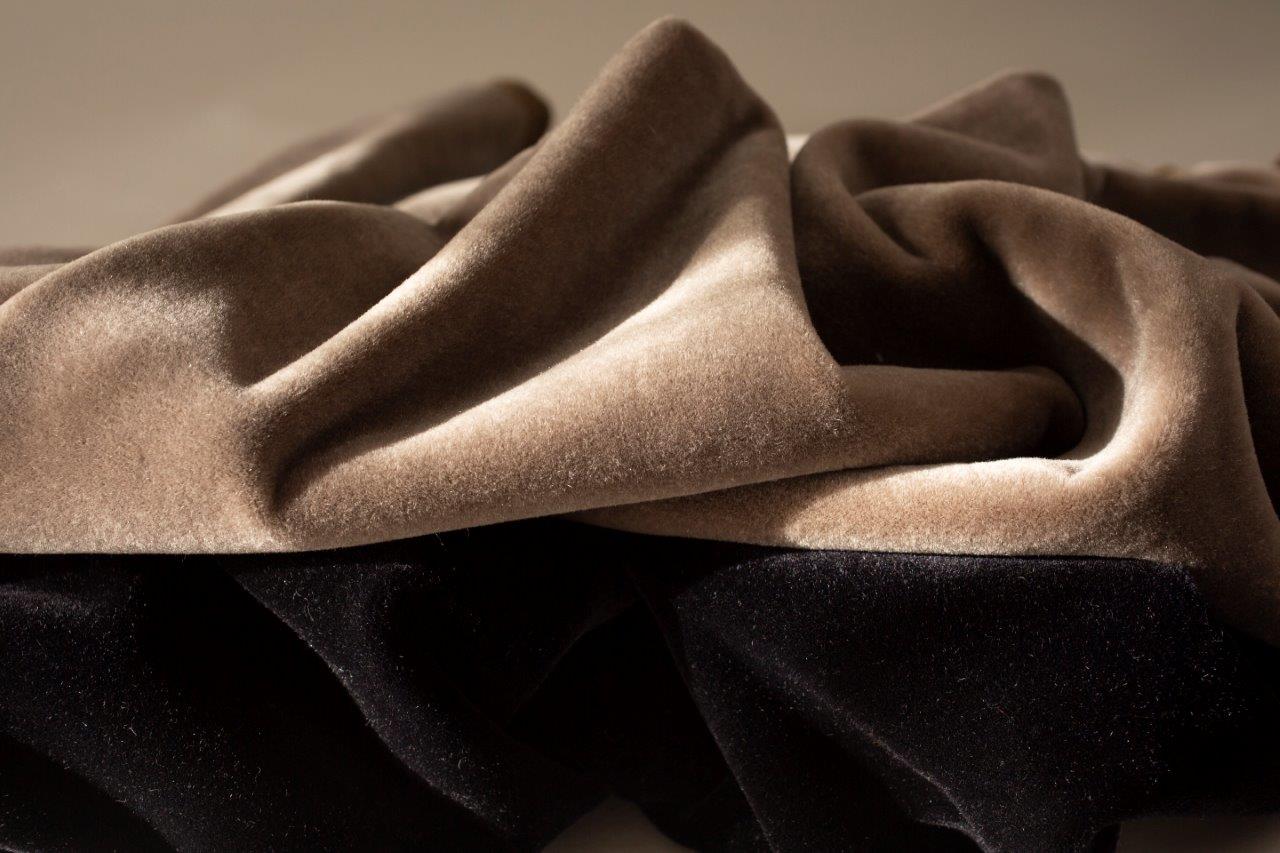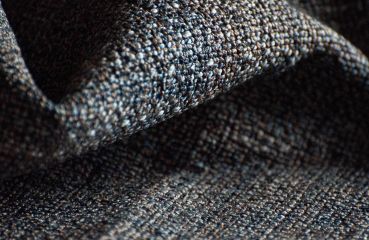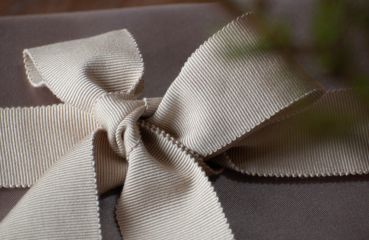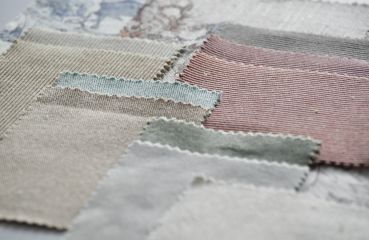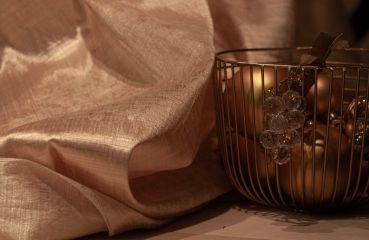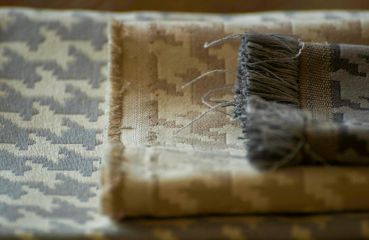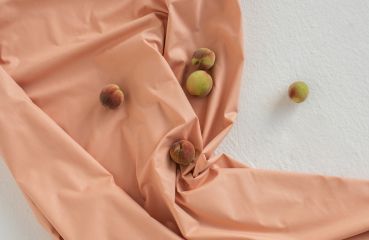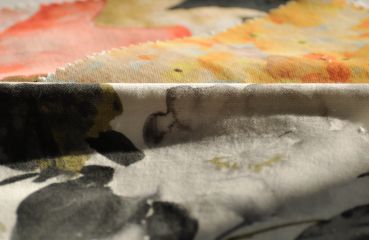About exclusive woollen fabrics and special PROPERTIES of mohair and alpaca
Where do they come from, and why do they cost so much?
Wool, whose advantages were extensively and enthusiastically described in our last year's blog entry (see “Genuinely pure and undoubtedly natural. About woollen fabrics” of 18 February 2020), comes in many quality variants and under various names that are not always clear and understandable. The main difference is the hairs of animals a given wool variety derives from. Each of these hair fibre types has different features and characteristic properties. Wool is made from the hair of sheep, goats, llamas, camels and even rabbits. Basically, the word wool means sheep's fleece. Any other wool will be marked as, for example, camel or goat wool. For convenience, the names of wool types are named after animals they are derived from.
The most valuable one comes from merino sheep (so-called merino wool). The most luxurious is cashmere goat wool, i.e., cashmere, although in fact the most expensive wool is that derived from a small South American cousin of the llama - vicuña, which gives silky-delicate wool with excellent properties. The warmest type of wool, known as qiviut, is obtained from the hair of the musk ox. This wool variety is eight times warmer than merino wool; it does not deform and retains its thermal parameters even when damp. Due to the extremely difficult breeding of musk oxen, qiviut has currently little relevance for the textile industry.
One of the main features used for wool classification is the hair diameter. Wool production and trade are governed by a rule that the thinner the fibre, the higher the quality and price of the finished product. The wool with a thickness of 15.5 microns, known as ultrafine merino, is considered the most perfect.
The essential features of merino wool fibres are their thickness and length. They are much longer than other wool fibres and extremely elastic, which means that merino wool practically does not crease. In addition, they are extremely thin, which in turn translates into their exceptional softness (merino wool does not cause an itchy sensation or does so to a much lesser degree than other types of sheep wool). Merino wool is also warm and perfectly absorbs moisture. It is considered a premium class wool. The majority of this type of wool comes from Australia, because the sheep living in that continent have to adapt to difficult weather conditions (temperatures range from plus 40 to minus 20 degrees Celsius). As a result, merino wool has excellent air permeability and heating properties.
The world-famous cashmere is wool derived from cashmere goats. The most expensive of all wool varieties, it is extremely soft and has a beautiful shine. One animal is capable of producing just over 150 grams of cashmere down. These delicate fibres are obtained by hand from the wool of live sheep. They are extracted from the coarser hairs of the animal by plucking and combing during the spring moulting season. In addition, the price of cashmere is affected by the fact that goat farming is only possible in high-mountain climatic conditions. Animals need to live in temperatures as low as minus 40 degrees to develop a down insulation layer.
The most durable of the wool varieties used in the production of fabrics is camel wool. Camels live in very difficult desert conditions, where daytime temperatures reach over 40 degrees and over minus 20 degrees Celsius at night. In addition, these animals are exposed to strong desert winds that carry grains of sand. Their coat has naturally adapted to these extreme conditions. The hairs are hollow inside, thus forming a double layer, with a natural insulator, i.e., air. They have a very high lanolin content which helps camels maintain their coat in a good condition. Despite its durability, it is delicate and very pleasant to the touch. Camel wool is obtained, similarly to cashmere wool, by combing the camel’s hair. Most often it is not dyed, and the name of the camel colour comes from its natural hue.
Mohair. Durability and softness in one.
Like cashmere, mohair is a type of wool derived from goat hair.
This goat species is claimed to have originated in Tibet, where this fine wool has been produced for a long time. In the 16th century, Turkey began breeding Angora goats and became a tycoon in the production of mohair for many years to come. Over time, many unsuccessful attempts have been made to breed these goats also in Europe in order to minimise transportation costs. In the 1830s, Angora goats were transported from Turkey to South Africa, where, under the watchful eye of breeders, the species acclimatized enough for South Africa to become the main producer of this fibre. Currently, the largest producers of mohair, apart from South Africa, include Turkey, Australia and the United States.
Angora goats are shorn up to twice a year. Unfortunately, the high price of this raw material leads to the abuse and ill-treatment of animals. Customers should be aware of this fact and buy mohair fabrics from responsible farms. In the commercial market, many brands are currently withdrawing from the production of mohair products following PETA reports on the treatment of Angora goats in South African farms.
The mohair fibres are extremely delicate to the touch and highly strong at the same time. They are twisted and long with a characteristic silky sheen, which gives fabrics an elegant character. This wool should not be confused with Angora, i.e., Angora rabbit wool, which is also delicate, fluffy, very light and elastic. Both these types of wool are most often blended with sheep wool.
Mohair fabrics and blends are soft, fluffy, and exceptionally lustrous considering that they are made from animal hairs. Mohair is a type of wool with very good insulating properties, thus providing a lot of warmth. It is characterized by long fibres with a thickness of 25-45 microns. It is also durable and has a beautiful shine. The advantages of mohair wool can be appreciated both in winter and summer. It readily absorbs moisture and stays cool in contact with the skin, when the temperatures rise. It is also elastic and easy to dye, which is important both in the clothing and interior design industries. However, mohair products have their disadvantages, too, as they can mat and change shape. This is why most fabrics in the industry use only 15% of mohair, which gives the fabrics a noble appearance, but at the same time does not negatively affect their structure. Mohair fabrics require gentle care.
In this context, Lincoln Mohair from the Dekoma collection is worth special attention. This upholstery fabric can boast extreme abrasion resistance of 1.5 million Martindale cycles! Anyone knowledgeable about the basic parameters of fabrics will certainly realise that this property is absolutely unique. For the sake of comparison, the average resistance is approximately 50-60 thousand cycles. The outer layer of the fabric is made of 100% natural, soft to the touch, fluffy but short-haired, subtly lustrous mohair. The natural flame retardancy and antistatic finish make the product ideal for use in exceptional public interiors, but it is also a perfect solution for household applications. The classic range of colours makes Lincoln a unique product for the renovation of antique, unique furniture. Thanks to its unprecedented durability, Lincoln is in line with the latest sustainability, being a product that can be passed on to future generations.
Alpaca. Wool in a beautiful earth colour range.
The alpaca is farmed in the Andes, from southern Peru and Chile to northern Bolivia. The animal resembles a more famous llama but is smaller and slightly more similar to a sheep. According to archaeological sources, llamas and alpacas were domesticated approx. 4000–5000 BC in the Peruvian-Bolivian region. Alpaca fleece is a thermal insulator: it retains heat, but does not cause overheating in the summer. This feature is associated with the life of alpacas in the mountainous regions of South America with harsh winters and hot summers.
The naturally silky alpaca fleece is warmer and more delicate than sheep's wool. It is also strong and resistant to damage, so you can be sure that it will last for many years.
There is a good reason why alpaca wool products are very popular among allergy sufferers and asthmatics. This is because alpaca fleece does not cause allergies. Due to the low content of lanolin (i.e., animal wax), alpaca wool is resistant to dirt, does not absorb dust and deters mites.
It is naturally flame retardant, has good anti-electrostatic properties due to its moisture content (up to 30%), and is extremely resistant to abrasion.
Alpaca wool comes naturally in about 20 colour variations, which renders dyeing unnecessary. A beautiful colour palette, derived from the natural colours of animal hair, comprises a subdued range of natural colours: from light, fawn greys to deep chocolate browns. This makes alpaca a perfect fabric for contemporary, natural interiors.
Fabrics from the Decoma collection featured in this article:
A collection of melange furniture fabrics made of Peruvian lama fleece. They are naturally flame-retardant and come in a range of noble natural colours, from grey to brown, following the natural colour of the animals’ wool. They have good anti-static properties thanks to their natural moisture content (up to 30%), and are naturally resistant to stains and wear. Apart from the plain Alpaca fabric, the collection also features Alpaca Stripes, with a pattern comprising all the colours of its plain counterpart.
LINCOLN
Fabric with extreme abrasion resistance of 1.5 million Martindale cycles. The top layer is made of 100% natural mohair. Natural flame retardance and antistatic finish make the product ideal for use in public places.
Walt is a top-quality heavy-weight woollen felt fabric. Its technical parameters make it perfect for use in public spaces. What makes Walt special is a range of trendy colours, from vibrant monochromes to pastel melanges. Interesting for creative designers looking for innovative solutions for unique interiors and buildings. The natural flame retardancy of wool makes Walt a natural pick for public spaces.
A noble, thick woollen fabric recommended for upholstery, but also suitable for decoration. It has good technical parameters and is naturally flame-retardant, as proven in the cigarette and match tests in accordance with British flame retardancy standards. Available in a range of 40 beautiful colours, including both natural colours (earth, grass, stone), classic neutral shades (beige, brown, cream and grey), and vibrant, deep colours not commonly found in wool fabrics: fuchsia, plum, aubergine, and emerald green.
SAVOY FR
This is a woollen decorative and upholstery fabric available in an exceptionally wide range of 163 shades. Monochromatic or mélange, Savoy RF has a noble, natural appearance. Recommended for curtains, both in cosy private rooms and public utility interiors. It has a fire retardancy certificate (including Crib 5). Suitable for use on ships (IMO-certified).
Founded in 1837, Abraham Moon & Sons is one of the last remaining vertical woollen mills in Great Britain. It is a family-run business with headquarters located in Guiseley, northern England. With roots in apparel, over time the company became the supplier of high-end woollen products for some of the world’s most prestigious fashion houses. Following the success of their fashion fabrics, Abraham Moon launched their first furnishing and decoration collection at the beginning of the 21st century. Dekoma has become the exclusive distributor of the company’s interior range in Poland.
Photo-session for Dekoma.
Creative thought and styling: MBBM Studio
Photos: Boris Miller.







